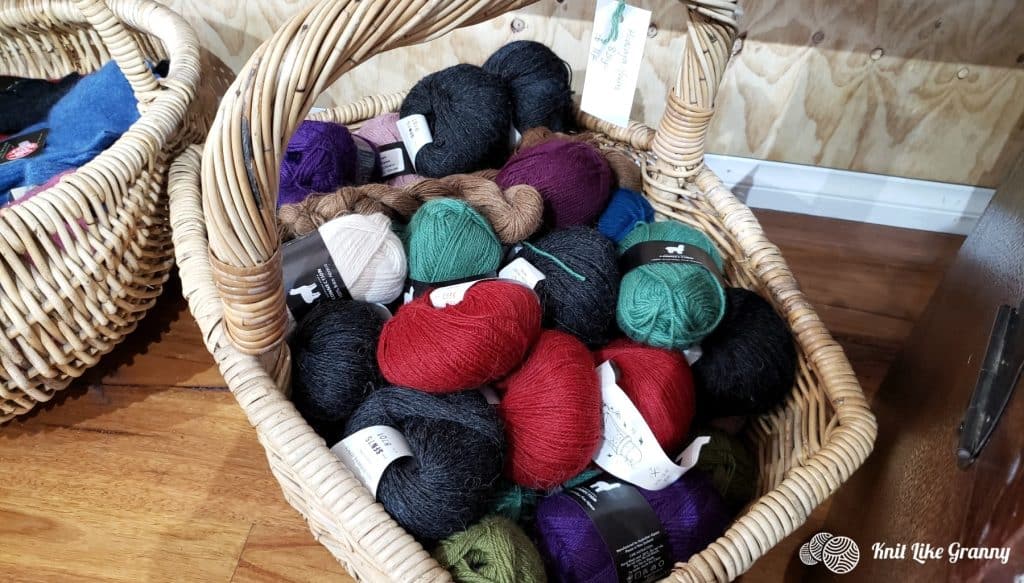Backwards knitting, also called mirror or reverse knitting, lets you knit left to right, eliminating the need for purling and turning your work to create stockinette fabric.

Frustrated Teacher Quits In Disgust, Sells The Farm, Moves The Family Halfway Across The World And… Starts Knitting
Why Knit Backwards?
I found several benefits of knitting backwards. One of the primary reasons is to avoid purl stitches, which can be more challenging for some knitters. By knitting backwards, you can focus on the knit stitch and still achieve the beautiful stockinette pattern without purling.
Another advantage of this technique is that it allows you to work on projects like entrelac knitting more efficiently. Entrelac knitting involves small blocks of stitches worked in a specific order, often requiring frequent turns. With backwards knitting, you can save time and energy by not having to turn your work as often.
It’s important not to confuse backwards knitting with reverse garter stitch or reverse stockinette stitch. These stitches are created by reversing the front and back of the fabric, while knitting backwards is a method of changing the direction of the knitting process itself.
Reverse Knitting: English Vs Continental
Knitting backwards, also known as reverse knitting, can be done with the two popular knitting styles – English and Continental.
When knitting backwards using the English style, I first orient my needles like they are in a regular knit row. I insert the left needle into the back of the first stitch on the right needle from left to right.
Then, I use my right hand to wrap the working yarn counter-clockwise around the left needle, just like in regular knitting. I slide the stitch off the right needle onto the left, completing the process.
When knitting backwards using the Continental style, I hold the yarn in my left hand, as I would for regular knitting.
While maintaining the yarn at the back of my work, I insert the left needle into the first stitch on the right needle as the English style – from left to right. Next, I wrap the working yarn around the left needle counter-clockwise using my right hand. Last, I slide the completed stitch from my right needle onto the left one.
How To Knit Backwards
How To Knit Backwards From Left To Right
I find knitting backwards from left to right especially helpful when working on short rows or other projects that require frequent turning.
To do this, I keep my work on the right needle and insert my left needle into the back of the first stitch from left to right. I then wrap the working yarn around the left needle counterclockwise using my right hand, and pass the stitch over the working yarn wrapped around the needle using the right needle, dropping the stitch off the left needle.
How To Knit Backwards From Right To Left
Knitting backwards from right to left is the more common direction for knitting. I just turn my work and do the knit or purl stitch as usual.
However, when knitting backwards, I don’t turn my work. Instead, with my working yarn on the right side of my swatch and my empty needle acting as the working needle, I follow the steps from the “How To Knit Backwards From Left To Right” section in reverse order.
How To Do The Knit Stitch Backwards
When I want to do the knit stitch backwards, I keep my work facing me and insert the left needle into the back loop of the first stitch on the right needle. I then wrap the yarn around the left needle counterclockwise and slide the right needle down to catch the new loop, pulling it through the old stitch. I finish by dropping the old stitch off the right needle.
How To Do The Purl Stitch Backwards
To purl backwards, I keep my yarn at the front of the work. With the yarn in my left hand (continental style) or right hand (English style), I insert the left needle into the front loop of the first stitch on the right needle from left to right.
I then wrap the working yarn around the left needle counterclockwise, and slide the right needle down to catch the new loop, pulling it through the old stitch. I drop the old stitch off the right needle.
I recommend practicing knitting and purling backwards on small swatches to get comfortable with the technique. Starting with a stockinette or garter stitch pattern is a great way to familiarize yourself with the different motions.
FAQS About Knitting Backwards
What’s the difference between knitting backwards and tinking?
Knitting backwards is a knitting technique where you knit in the reverse direction without turning your work. It can be a timesaving technique, especially when working on small projects or short rows. For instance, when you have reached the end of a row and realize there’s a mistake at the beginning of the row, you could avoid purling by knitting backwards. It can create different stitch patterns, such as garter and stockinette stitches.
Tinking is a term derived from the word “knit” spelled backward and refers to undoing one stitch at a time, working your knitting in reverse. It’s used when you find a mistake a few stitches back in your work. Tinking allows you to correct mistakes without having to rip out entire rows or sections.



